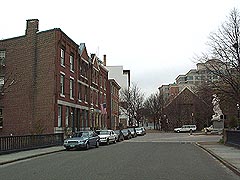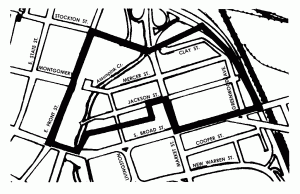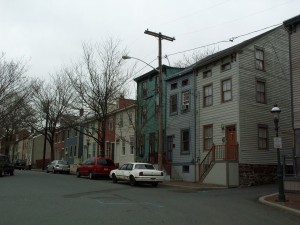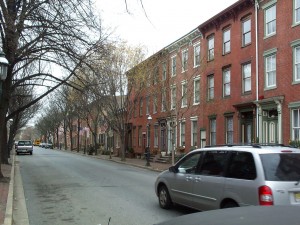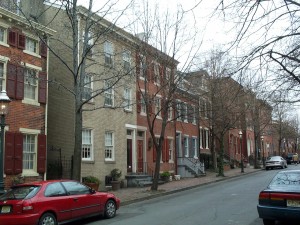Mill Hill presently survives as a middle-class mid-nineteenth century residential district but its historical significance reaches back to the late seventeenth century. Indeed, its name refers to its importance as the area’s first industrial site, a grist mill, erected in 1679. During the American Revolution, the ground adjacent to the mill was, on January 2, 1777, the site of the Second Battle of Trenton. The northern perimeter of Mill Hill was thus the site of one of the three major encounters of the ten-day Trenton-Princeton Revolutionary War Campaign. A significant portion of this battlefield has been developed as Mill Hill park.
The name Mill Hill was applied to the area at least as early as 1821, although as yet relatively little beyond the original mill appears to have been built. In the late 1830s and 1840s, the opening of the Delaware and Raritan and the Camden and Amboy and Philadelphia Railroads evidently served as the impetus for industrial development on the periphery of the district. Residential construction commenced in the 1840s and 1850s.
The Mill Hill District is a tight-knit group of homogenous residential structures. Largely built between 1850 and 1895 they are representative of a vernacular interpretation of the popular styles of the second half of the nineteenth century. The prevailing form is the two or three-story, three-bay wide brick row house. To these are applied, depending on the time construction, simplified late Greek Revival, Italianate, Second Empire, or Eastlake decoration.
Go to Old Mill Hill Society Website
The Assunpink Creek in Mill Hill, A History and Consideration of Historic Intrepetive Opportunities
by Nadene Sergejeff, Damon Tvaryanas, Ian Burrow, & Richard Hunter, 2002

